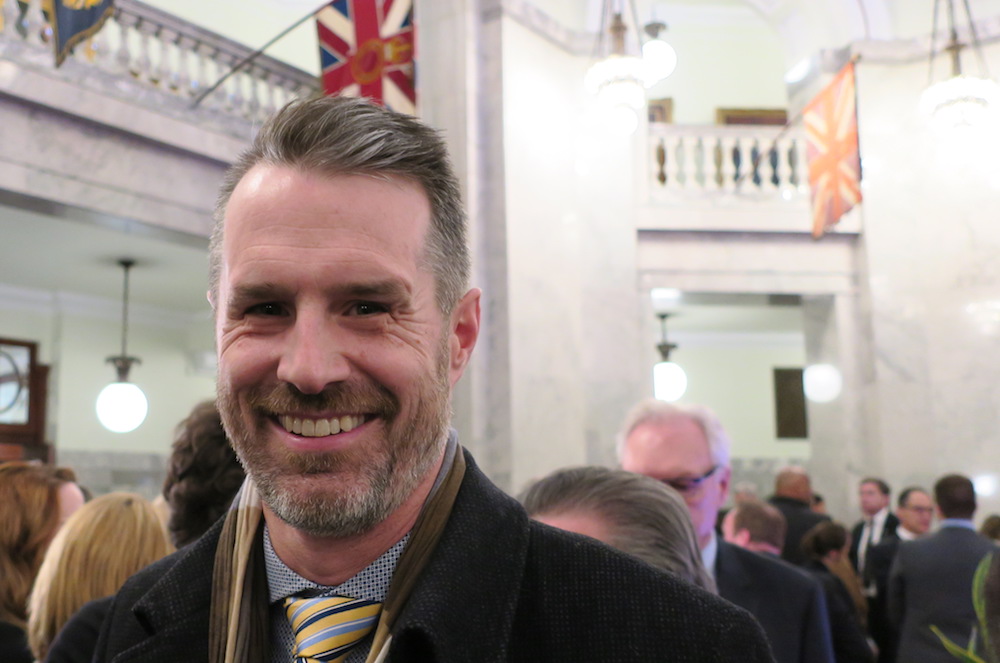If readers will forgive me for turning away for a moment from the fascinating and highly entertaining topic of the Kingdom of Saudi Arabia’s bizarre attempt to mud-wrestle Canada into submission, we need to look at a topic a little closer to home, to wit: Athabasca University.
Readers will recall how in 2015, Albertans were warned the province’s online university was in deep financial trouble, likely looking at insolvency within two years.
Over the subsequent year, a grim tussle ensued between the university’s outgoing interim president and NDP Advanced Education Minister Marlin Schmidt over whether or not faculty and staff would have to be laid off.
Eventually, the minister nixed the idea, which would have had a brutal impact on the economy of the Town of Athabasca, 130 kilometres north of Edmonton.
In August 2016, former Northern Alberta Institute of Technology President Neil Fassina was hired as President of Athabasca University. In September that year, the NDP appointed five new members to the University’s board. In March 2017, the NDP appointed Edmonton architect Vivian Manasc as chair of the University’s board.
So far so good. Whether the changes were the charm, or the compromise budget put in place by interim president Peter MacKinnon before the new Board members were appointed did the trick, something seems to have worked.
On the financial front, things are looking up dramatically for the 48-year-old institution that got its start as an unusual all-correspondence university located on a campus with no students in small-town northern Alberta.
In those days there was no Internet, so Athabasca and its students relied on the postal service. The rise of the Internet was part of Athabasca’s problem: It made it easier for conventional universities to compete with online courses and programs.
In four of the past five years, though, Athabasca has posted surplus budgets. The one year it didn’t, 2016, the deficit was slightly over half a million dollars, hardly a deal-breaker. Last year’s surplus was $3.6 million.
Part of the story is that Athabasca has benefited from two years in which it received two per-cent increases in government grants, which comprise about 35 per cent of its total revenue.
But another important part of the university’s successful journey back from the brink is that enrolment has been steadily trending upward since 2013 as student confidence in the university’s future turned around. In the current year, undergraduate course registrations are up 15 per cent. It’s important, because Athabasca University derives about half its revenue from tuition.
Naturally, given the current fashion for running public universities as if they were for-profit corporations, senior administrators have been rewarded with generous bonuses.
In 2017, Fassina received a 16 per cent bonus worth almost $62,000 on top of his contractual base pay of $337,000 plus the 15 per-cent bonus he received in 2016. This raised his annual salary to $450,000, a sum that does not include the value of pension and other perks.
Also last year, former Athabasca Finance Vice President Estelle Lo was paid $267,500 in base salary, $34,540 in other compensation, and $388,900 in severance — for a total $691,000.
So why, Athabasca University faculty members wonder, are they having so much trouble negotiating a new contract?
They’re in negotiations now — the first time under court-mandated changes to Alberta’s labour laws that mean they have the right to strike legally, and the employer has the right to lock them out.
So far they’ve been offered zero for 2018, zero for 2019, and 43 pages of rollbacks!
Well, as a shrewd observer of labour relations of my acquaintance observes, two zeroes fit with the government’s mandate for public sector salaries. But other unionized public sector employees have been able to negotiate improvements in contract language, or at least hold the line on good contract language they already had, in return for accepting the wage freeze.
Yet university negotiators have not accepted any union proposals, although they have withdrawn a few of their most egregious demands.
Right now, there is little evidence Athabasca University is prepared to make any concessions in pursuit of a wage freeze, or that the union is prepared to accept anything but.
Common sense suggests huge raises for the bosses and no raises for the people doing the work is a formula for a labour dispute. The timing would put any such dispute right before the general election expected in 2019.
Needless to say, a strike at Athabasca would not be good news for the NDP or New Democrat MLA Colin Piquette, who was elected in part because of local concerns about the future of the university, and who will have to deal with significantly redistributed riding boundaries in 2019.
When you think about this, remember this key fact: Athabasca University is no longer in financial peril.
You have to wonder why this university is pushing negotiations toward the cliff at a sensitive moment for a government that’s worked hard to keep it viable and at a time when other Alberta public universities are making progress toward finding reasonable agreement on collective agreements with their academic employees.
This post also appears on David Climenhaga’s blog, AlbertaPolitics.ca.
Image: David Climenhaga
Like this article? Please chip in to keep stories like these coming.





